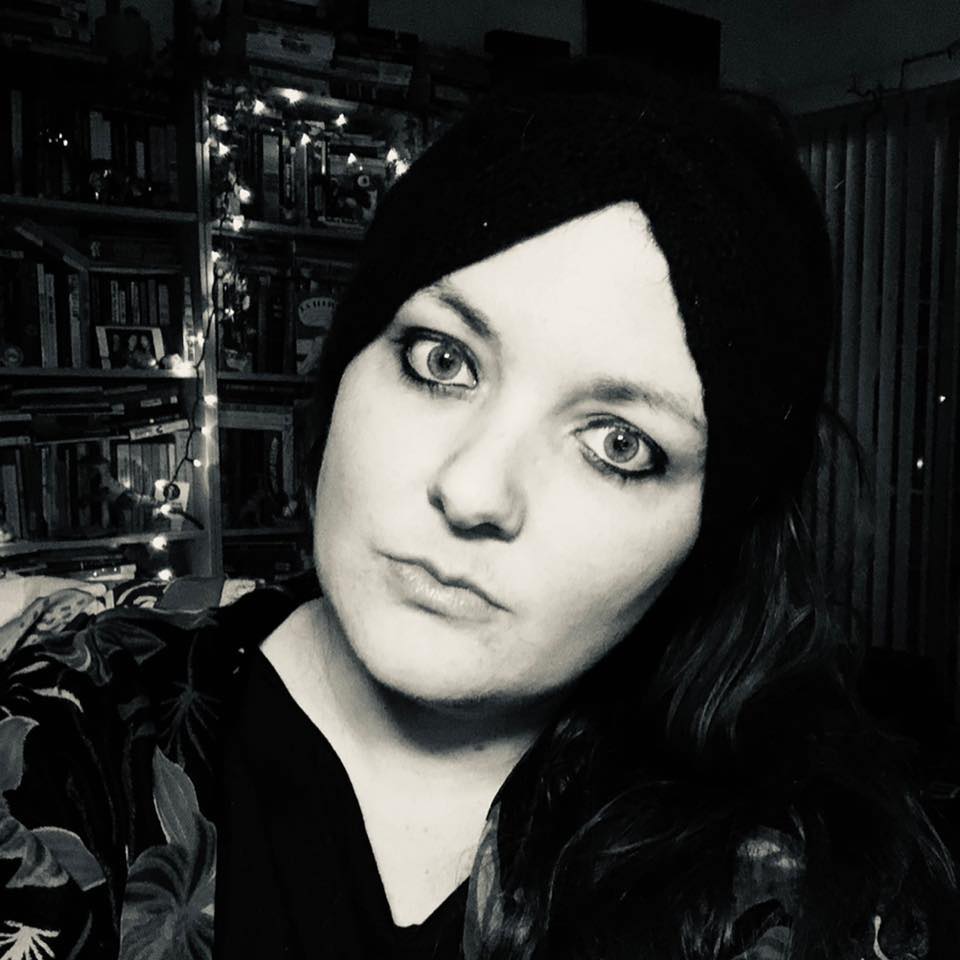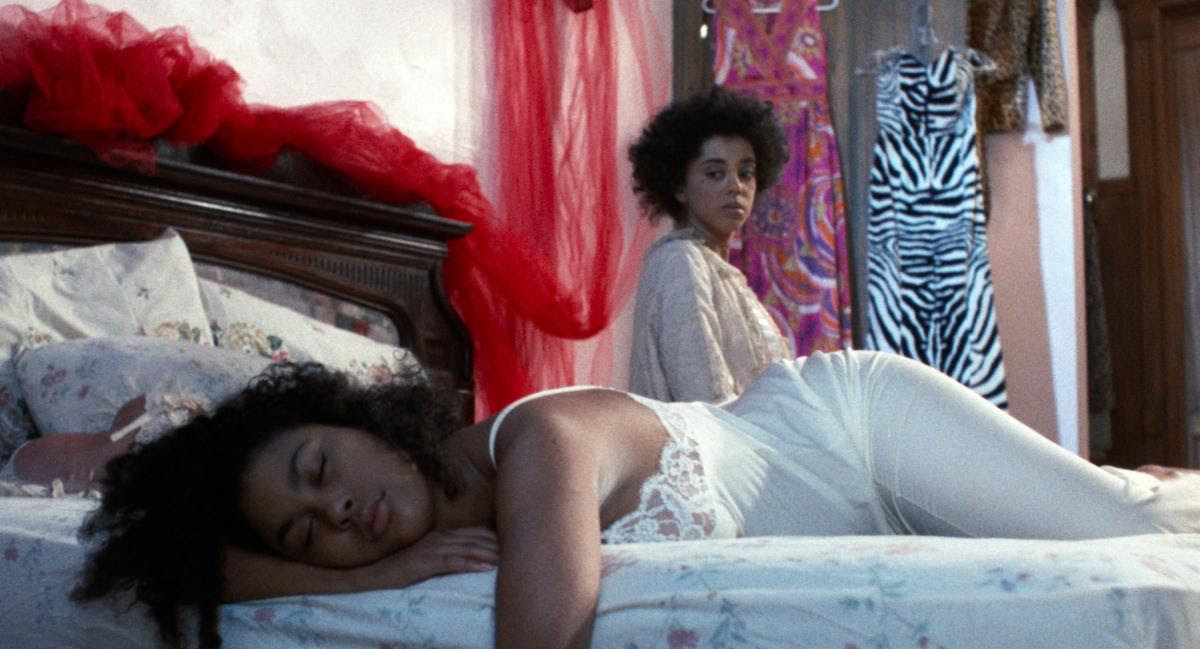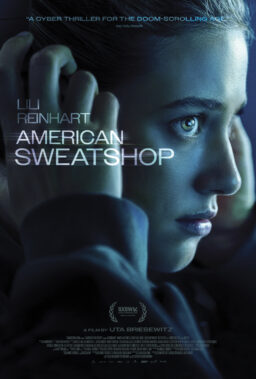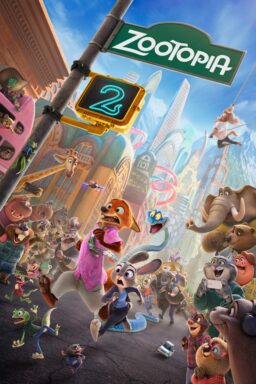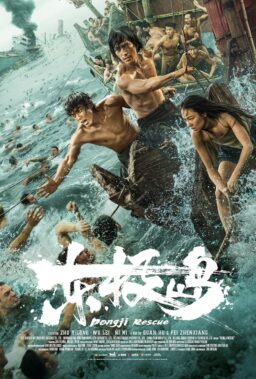Originally released in 1994, Ayoka Chenzira’s striking feature film “Alma’s Rainbow” is a coming-of-age tale that follows a girl named Rainbow (Victoria Gabrielle Platt) as she grows up in the beauty parlor run by her loving, but strict mother Alma (Kim Weston-Moran). When Alma’s flighty sister Ruby (Mizan Nunes) returns after a decade away working as an entertainer in Paris, the girl, who wants to be a dancer herself, sees another way of living life. While Ruby’s presence opens up old wounds for Alma, it also inspires her to open up to life again. Filled with vibrant color and rich details, “Alma’s Rainbow” is a film you won’t forget.
Its new 4K restoration from Academy Film Archive, Film Foundation, and Milestone Films, comes four years after her short film “Hair Piece: A Film for Nappy Headed People” was added to the National Film Registry for its significance to American film heritage. Like her mentor Kathleen Collins, Chenzira’s films purposefully push back on what a “Black” film can be. While she earned her BFA from NYU, her Master’s in Education from Columbia, and her Ph.D. from Georgia Tech, she cites her mother’s beauty parlor as where she got her degree about life.
Known for restoring and distributing the works of directors like Collins, Charles Burnett, Billy Woodberry, and Shirley Clarke, Milestone Films, who has recently partnered with Kino Lorber, is an ideal fit to restore and distribute the works of Chenzira. Their commitment to not only expanding the canon, but to present as many works from filmmakers as possible allows those filmmakers the chance to have their work understood as a holistic body of work. After seeing their wonderful work on “Alma’s Rainbow,” I can’t wait to see what other gems from Chenzira are waiting to be rediscovered.
RogerEbert.com spoke to Chenzira over Zoom about discovering storytelling in her mother’s beauty parlor, being mentored by Kathleen Collins and Waldo Salt, and the need for complexity in films about Black life.
Could you talk a bit about the inspirations that you drew from your life and your mother’s own beauty parlor?
I think my first real introduction to storytelling was in my mother’s beauty parlor. It was a place where women came and gathered and shared a lot of information. And as an only child, I think I sucked a lot of that up, in addition to my mom, really, really, really loving movies. I think one of the things that she really loved about the movies were the costumes and the wardrobe, because she made clothes from scratch, or she redesigned like Vogue patterns and Butterick and Simplicity patterns. She had an incredible sense of style, and beauty. So at a very young age, I was exposed to wardrobe and color and material and texture. I also grew up in the Catholic Church during a time when only Latin was spoken. It was like a big costume drama. I think those things, the work that my mother was doing and being in that Sunday space at this big costume drama, this operatic space, informed some of the tone and color and shape of “Alma’s Rainbow.”
From a story perspective, I saw a lot of young girls and their moms in crisis, because the daughter was struggling to grow up and the mother just had her thumb on the child so hard that neither of them could move forward. I did grow up with a very strong, tenacious, opinionated parent who told me not to take no for an answer except when I was dealing with her. So you know, you’ve got two strong-headed people in the house. I wanted to explore that space where a young girl’s trying to grow up and the parent in some ways has just stopped growing, and is almost choking on it, paralyzed by fear. So they become an overprotective parent in hopes that the child will be safe. But of course children, you don’t own them. And they have to find their way in the world and hopefully with your blessing and your guidance.
In the credits you thanked both Kathleen Collins and Waldo Salt, both of whom passed before the film came to fruition. What were those relationships like?
Kathleen was my daughter’s godmother. We met, I actually don’t remember the first time I met her. You have these friends in your life and you just feel like you’ve known them forever, and maybe even from other worlds. Kathleen was a very special spirit in that she grew up in a small community. She studied at the Sorbonne. She was a philosopher. She was not afraid to speak her mind. She taught at City College for a number of years. She ran the film program there and she called me one day and said that she was going to go on sabbatical. And asked if I would take her place at City College while she was on sabbatical. What I didn’t know at the time, is that she was dying. She knew she was dying and she made a space for me, at that institution, essentially setting me up to take over for her without telling me that she was dying. So it took me a long time to come to terms with that, because we were close. I was like, why couldn’t she just tell me? But you know Kathleen did things in her own way. She would often say to me, “I know you love all this world of experimentation. It is perfect for you to be at a college or university so that you can continue to feed yourself while you’re making all of this very expensive experimental work.” So, you know, that was Kathleen.
I met Waldo Salt when I was at Sundance. He and I took an instant liking to each other. He said, “You know, I’m going to tell you some of the secrets of Hollywood, and I’m probably going to get killed for it.” He had an apartment in New York, and I was living in New York, so when he was in New York, I would go to his apartment, and we would talk about screenwriting. It so happened that “Midnight Cowboy” is one of my favorite films and he wrote that adaptation. So I just spent a lot of time learning. Learning about screenwriting and story structure and storytelling from him. He also shared some of the challenges that he had in his life and his challenges with the industry, which was very helpful. There’s two people in my life who have been very open about what their experiences were, what their experiences were like in Hollywood. One was Waldo Salt and the other was Omar Sharif, and both of them have a very special place in my heart as a result.

I always love to hear an Omar Sharif story. He was such a poetic actor.
Many, many years ago, “Alma’s Rainbow” was playing at a film festival in Milan. I was invited to show “Alma’s Rainbow,” and I arrived for dinner late because my plane came in late. At the restaurant there was a table full of filmmakers and people associated with the festival. I turned to somebody and I said that guy over there looks a lot like Omar Sharif. And they said, well, it is and then he said, come sit by me. And the rest is history. I think we consumed about 14 bottles of wine. And tongues got looser and looser and looser.
He was my host for three days. He allowed me to photograph him for three days and just shared incredible stories about how he learned to gamble. His wife had a clitorectomy, and it’s harder to satisfy women who have had a clitorectomy. She became addicted to a substance and he needed to feed his family. It was just all really on the table and messy and complicated as life could be. I think one of the heartbreaking stories was that when he was initially signing his first contract to do a series of movies, he didn’t know that the amount of money was for all the movies and not just one. Also when he fell out of favor, how he didn’t have the best table at a restaurant anymore. That people really snubbed him and were unkind, as people often can be.
When you were developing “Alma’s Rainbow” Rosalind Cash was involved. Could you talk about how the casting evolved?
I took Rosalind Cash, Tisha Campbell, and Anna Horsford to Sundance with me. At that time, Euzhan Palcy was the first Black woman to go to Sundance, I was the second. So I got a call from Sundance saying they had a pool of actors that they work with, but they said quite frankly they didn’t have any African Americans in the pool and were there people that I would like to work with? So that’s how those three women got Sundance. Afterwards. Rosalind went on to do another film so she was not available. I think Anna Horsford was doing a television show. So I started from scratch.
I held auditions in New York and saw about 500 people. Kim Weston-Moran was reading sides with the actors and at one point I just looked at her and I said, “Kim, you should play Alma.” So that’s how Kim became Alma. Victoria Platt, who plays Rainbow, auditioned. She was young and very, very strong, very, very strong. As a young person, she was just so generous in the audition. We cast someone as Ruby and they had to drop out, so I was looking for someone to play that role. Everyone said, “You’ve got to talk to Mizan [Nunes]”. So someone made a phone call, I went to her apartment down in the village. She auditioned and right on the spot I hired her. Initially Cassandra Wilson was contracted to play Ruby, but she had an opportunity to go on a tour and sing and it was one of those opportunities that came at the right time in her life, and so we let her out of her contract.
Speaking of singing, you wrote the song that Ruby sings in the funeral parlor. What was the inspiration behind that?
There was a time when I was traveling around Europe a lot. It was so interesting, the sensibility, where you’d see a lot of performers who had more personality than they did talent. It was so obvious to me that the personalities were kind of big and flamboyant and bold, but the talent wasn’t there. They’d be singing off key or arrhythmically—and not in a good way. Ruby is a person who’s really living off of her personality, in many ways. She’s not Josephine Baker. She admires her, but she’s not that. She doesn’t have a great singing voice, but she’s got a lot of chutzpah. So I wanted to write a song that was kind of bizarre, in many ways, but one that she just felt so attached to that she just gives it her all in that moment.
Another part I thought was really striking was the way you introduced Rainbow binding her breasts. You don’t often see girls represented in film not being prepared for puberty, not wanting people to know about their puberty, and then obviously, she gets her menstrual cycle, and I thought the way you dealt with that shock was really interesting.
In my own developmental years, I remember certain kinds of stories that I heard in my mother’s beauty parlor about men, about domestic violence, about being unfaithful. Early on, I kind of decided, or maybe it was decided for me, that I was put in this category of tomboy. I very much like sports. I was a very physical child. I had a lot of male friends growing up, and I saw them starting to change. So I felt more comfortable in baggy clothes, clothes that didn’t reveal the body. I didn’t want to talk to anybody about my body. I didn’t want anybody to talk to me about my body. I know some of that is tied up with some of the decisions that I made for the character Rainbow.
In the press notes from Milestone Films, they mention Project Ayoka, which makes me think of Project Shirley, where they restored all of Shirley Clarke’s films. Are more restorations in the works for the rest of your filmography?
Milestone Films is distributing my collection of work. We started the conversation in late 2019, and then COVID hit and everything was put on hold. The Academy of Motion Picture Arts and Sciences oversaw the restoration. “Hair Piece” is also being restored. So, Milestone has both my 35mm and 16mm films, but also my video work. It’s all going to go back into distribution, although right now, I only know of “Hair Piece” and “Alma’s Rainbow” being set for restoration.
The film was originally released in mono only, and now it’s in stereo. Also, the color on this restoration is so gorgeous. What was this process like for you?
It’s just amazing because when I saw the film at BAM, it looked like how I wanted it to look. I’ve only seen it projected a few times at a few festivals. All the other times I saw it it was on VHS and the colors were … it was colorful, but it was rather muted, and I’ve never heard it in stereo before the premiere at BAM. As the maker I can say it’s the first time where I felt like I had a really, truly immersive experience because it was shown the way I always felt that it should be shown and in the way it should sound. I still can’t believe we are where we are right now with the film.
This film initially came out right around the same time as “Boyz N the Hood,” which in a way changed the face of both Black mainstream and independent cinema in the ’90s. But at the same time, there was a whole group of films that sort of got lost in the wave. “Losing Ground,” 10 years earlier, but also “Daughters of the Dust” and “Just Another Girl On The I.R.T.” These films that didn’t fall into the marketable category, yet had fans from television and video, but really weren’t talked about in the same conversation until recently. Do you remember what it was like at that time and if you felt that?
I very much felt that and the distributors were very forthcoming. This was not “Boyz N the Hood.” In fact, I was told this is a story where nothing really happens. We were told that it was not plausible for a Black woman to own such a beautiful home, even though the home where we filmed is actually owned by a Black couple and most of the things that you see in the house they own.
I felt that, and still feel that Black culture gets put in these boxes. When you live long enough you see patterns, and at that time what was considered authentic Black culture was sort of Black male testosterone and a kind of pathology that got mapped onto Black people in Black culture. I have always pushed against that, particularly when I didn’t feel that it was authentic. For me, it moved into an area of being almost pornographic in terms of poverty and violence. Much of my work pushes against that and talks about other things. This idea that Black people can only be one thing at a particular time is insulting, it’s offensive, it’s short sighted, it’s not historically accurate. The money people, that’s what they were interested in, and there was just no interest in other ways of looking at life.
How does it feel now that these films are being rediscovered, for lack of a better word, and being talked about as they always should have been?
Dennis Doros [of Milestone Films] asked me to write something, just a little blurb that could be used, and one of the things I remembered saying is that many filmmakers abandon their work, but I never have in my heart. I’ve never abandoned my work because it is a piece of me, you know, my work represents pieces of me at different parts in my life, and I love them. I love them all. So, my sense is that I am very pleased that people have caught up to the work and now want to talk about it in ways that are much more positive and supportive.
Also, I am mindful that it took a lot for people to come around. Some of that is painful. With the murder of George Floyd, for all to see around the world, different kinds of conversations are happening. I would say it started a second wave of people actively looking for other ways to think about, talk about, and engage with people who are different from them. Except that we all eat, sleep, and poop, but other than that, with people who they don’t historically have much connection with. A lot that had to happen for this kind of rebirth that we’re seeing.
You worked on “Queen Sugar,” which Ava DuVernay specifically used to hire women who worked in the past and maybe hadn’t gotten a fair shake in industry, or women who had made independent films but couldn’t break into TV. What was that experience like, and do you think the industry is changing from within?
Ava first hired me in 2018 to do my first television episode and so many of my friends said, “you know, you are absolutely going to hate television, because it’s a machine. It’s a writer’s medium, and not really a director’s medium. You’re so used to doing everything yourself from writing to raising the money to distribution and marketing, you’re not going to like it.” I walked on that set, and I tell you, I absolutely fell in love with what Ava had created. She created such a welcoming environment. It was just wonderful to see people at the top of their game, all making the story come to life and giving it their best. I absolutely fell in love with television. I’ve been pretty consistently directing television since 2018. Ava opening that door for me has been a real game changer in my life and I am forever grateful to her for that opportunity.
In terms of things changing, my sense is that it’s still a very small number of shows that are doing the heavy lifting. When we look at the number of women of color, whether they be directors or writers, who are working in television those numbers are still really, really tiny. If you look at the shows, it’s not a significant portion of the landscape. It’s in pockets. My sense is we still have a very long way to go.
One of your most recent projects is the new “A League of Their Own,” which is a show that aims to shine a light on history that has been ignored. Can you talk a bit about your experience on that show?
Will Graham and Abbi Jacobson hired me for that show, and it was extraordinary. I had to go to baseball camp. They flew the directors out to LA so we could learn baseball. And not only baseball, but 1943 baseball, where some of the rules and what’s done are slightly different. It was boot camp for the directors, and particularly for the actors to get them in shape and look like athletes. It was incredible. We filmed in Pittsburgh. They built stadiums, and it’s a period piece, so details are very, very, very important. I remember the original film, and now having worked on the series, what is pulled to the foreground, which was more implied in the film, but is very much pulled to the foreground in the series in ways that are just extraordinary and beautiful and timely and powerful and painful. I think people are really going to have a lot of conversations around this version of “A League of Their Own.”
This re-release of “Alma’s Rainbow” is the widest it’s been seen in 30 years. How do you hope people feel when they’re finished watching the film?
It’s a comedy-drama and it’s a feel good story, so I hope that people feel good when they leave the theater. I hope that they feel the love that’s there with these women. I hope that they have a really beautiful, immersive experience and that they learn and understand, if they don’t already know, that there’s so many things that we can talk about in terms of women’s lives, and Black women’s lives. There’s also a connection to the Caribbean community.
I love the woman who is always in Alma’s salon. She was so funny.
She’s not an actress. She’s a person that I think worked at the UN. We were looking for Caribbean people, asking if anybody knew anybody and she came and was just extraordinary. I haven’t seen here in a long time, but that connection, that African American Caribbean and African connection is there in the film. Also the beauty of the work from Sydney Kai Inis’ costumes and wardrobe to Peggy Toone and what she did for us in her house to Ronald Gray’s incredible cinematography and Lilian Benson’s editing. It all just works as a beautiful, cohesive story. So I’m hoping that people will walk away and feel as though they saw something very special.
A 4K restoration of “Alma’s Rainbow” is now playing in select theaters.
